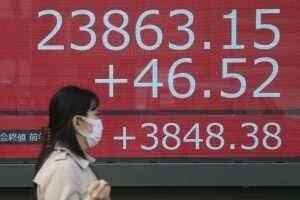
The allowance for doubtful accounts appears on the balance sheet and reduces the amount of receivables. Whereas assets normally have positive debit balances, contra assets, though still reported along with other assets, have an opposite type of natural balance. A second example of a contra asset account is Accumulated Depreciation. For instance, if a company has a plant asset such as Equipment with a debit the difference between vertical and horizontal analysis balance of $92,000 and the account Accumulated Depreciation has a credit balance of $50,000, the carrying amount (or book value) of the equipment is $42,000. The following are examples of contra expense accounts used in double entry bookkeeping. In bookkeeping, a contra asset account is an asset account in which the natural balance of the account will either be a zero or a credit (negative) balance.

The purchase returns and allowances accounts exist due to the accruals concept in accounting. When companies incur an expense, this concept requires them to record it. It does not need a cash settlement to become eligible for recording.
Asset Contra Account
The revenue contra accounts Sales Returns, Discounts and Allowances are subtracted from the main Sales Revenue account to present the net balance on a company’s income statement. However, the purchase returns account will get replaced with the allowance account. A contra account is an account used in a general ledger to reduce the value of a related account. A contra liability account adjusts the value of liabilities held by a company on its balance sheet.

The debit to accounts payable reduces the purchases on the income statement in line with the contents of the purchase returns and allowances account. Key examples of contra asset accounts include allowance for doubtful accounts and accumulated depreciation. Accumulated depreciation reflects the reduction in value of a fixed asset. The above explanation provides a basis to record purchase returns and allowances.
List of Contra Accounts
Another type of contra account is known as “contra revenue,” which is used to adjust gross revenue to calculate net revenue, i.e. the “final” revenue figure listed on the income statement. The allowance for doubtful accounts – often called a “bad debt reserve” – would be considered a contra asset since it causes the accounts receivable (A/R) balance to decline. A purchase allowance is a reduction in the price of goods or services after delivery.
- Contra equity accounts carry a debit balance and reduce equity accounts.
- The symmetry in these accounts is achieved through a debit, which is the converse of the original credit balance in the gross account.
- Since it is a contra asset account, this allowance account must have a credit balance (which is contrary to the debit balances found in asset accounts).
- Purchase Allowances is a contra expense account with a credit balance that records the value of purchase cost deductions granted by a seller in exchange for a buyer retaining damaged, incorrect or otherwise faulty goods instead of returning them to the seller.
- Therefore, they need the purchase returns and allowances accounts to offset it.
Accountants use contra accounts rather than reduce the value of the original account directly to keep financial accounting records clean. If a contra account is not used, it can be difficult to determine historical costs, which can make tax preparation more difficult and time-consuming. This type of account could be called the allowance for doubtful accounts or a bad debt reserve. The balance in the allowance for doubtful accounts represents the dollar amount of the current accounts receivable balance that is expected to be uncollectible. The amount is reported on the balance sheet in the asset section immediately below accounts receivable. The net of these two figures is typically reported on a third line.
What is the normal balance of contra accounts for purchases?
The store manager decided to keep the defective ones and sell them at a discount since he could get a price reduction from the supplier. If Star Sporting Goods received a shipment of 100 baseballs, but five were found defective and returned to the seller, this is called a purchase return. Purchase returns can be described as the term for a shipment of goods returned by a merchant to the supplier or formally defined as the return of unsatisfactory merchandise to the supplier. In contrast, a purchase allowance can be described as the reduction in price granted by the seller when a merchant decides to keep unsatisfactory merchandise rather than return it. Purchase returns and allowances do not appear on the balance sheet as they are not liabilities.
Itaú Unibanco S A : 2Q 21 Management discussion & analysis and complete financial statements Second quarter of 2021 (Form 6-K) – Marketscreener.com
Itaú Unibanco S A : 2Q 21 Management discussion & analysis and complete financial statements Second quarter of 2021 (Form 6-K).
Posted: Tue, 03 Aug 2021 07:00:00 GMT [source]
The other is to keep the unsatisfactory merchandise in return for a price reduction from the supplier. In double entry bookkeeping terms, a contra expense account refers to an account which is offset against an expense account. For example, accumulated depreciation is a contra asset that reduces the value of a company’s fixed assets, resulting in net assets. Reserve for obsolete inventory is a contra asset account used to write down the inventory account if inventory is considered obsolete. Excess, stored inventory will near the end of its lifespan at some point and, in turn, result in expired or unsellable goods. In this scenario, a write-down is recorded to the reserve for obsolete inventory.
Contra Revenue Account
However, that $1.4 billion is used to reduce the balance of gross accounts receivable. Therefore, contra accounts, though they represent a positive amount, are used to net reduce a gross amount. For this reason, contra accounts are primarily seen as having negative balances because they are used to reduce the balance of another account.
Sonae Industria SGPS : Separate and Consolidated Financial Statements – 2020 – Marketscreener.com
Sonae Industria SGPS : Separate and Consolidated Financial Statements – 2020.
Posted: Tue, 30 Mar 2021 07:00:00 GMT [source]
Instead, it keeps the goods and receives an allowance or a price reduction. However, it affects the company’s purchases figure https://online-accounting.net/ in its income statement. Usually, companies record purchase allowances in the same account as purchase allowances.
What is Sales Returns and Allowances?
Regardless of its presence in the books, both accounts reduce the purchases figure in the financial statements. However, they do not directly impact the purchases account in the general ledger. Purchases will normally have a debit balance since it represents additions to the inventory, an asset. In the financial statements the purchases account would be offset against the contra expense accounts to show the net purchases.
A buyer debits Accounts Payable if the original purchase was made on credit and the payment has not yet been made to a seller. Chartered accountant Michael Brown is the founder and CEO of Double Entry Bookkeeping. He has worked as an accountant and consultant for more than 25 years and has built financial models for all types of industries. He has been the CFO or controller of both small and medium sized companies and has run small businesses of his own. He has been a manager and an auditor with Deloitte, a big 4 accountancy firm, and holds a degree from Loughborough University.

